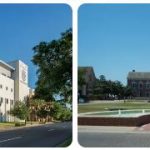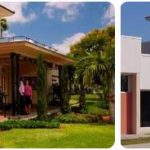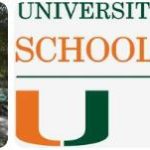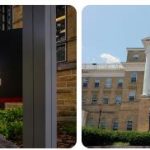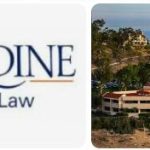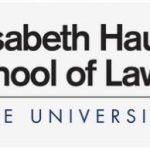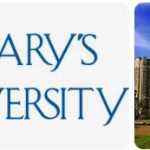The University of Baltimore School of Law was established in 1925 as the Baltimore College of Law. It was the first school in Maryland devoted exclusively to the study and teaching of law. The school was founded by a group of prominent local attorneys and judges who recognized the need for a quality legal education in Maryland. The School of Law quickly became known for its rigorous curriculum and distinguished faculty, which included many prominent attorneys, judges, and scholars. Over the years, the school has grown to become one of the top-ranked law schools in the country. Throughout its history, UBSL has remained committed to providing students with an outstanding legal education that prepares them for successful careers in law and related fields. The school continues to offer courses that are both comprehensive and cutting-edge, allowing students to gain valuable knowledge and practical experience while pursuing their degree.
University of Baltimore School of Law is located in the state of Maryland. As one of the leading law programs, University of Baltimore School of Law has a high average LSAT score of 153-158 when recruiting new students. As a return, the median starting salary for law graduates reaches $65,000 per year. See the following table for detailed admissions information and career profiles of University of Baltimore School of Law.
Admissions: University of Baltimore
University of Baltimore School of Law is one of the most selective law schools in the United States. The school has an acceptance rate of 40%, meaning that it admits only 40% of all applicants. The median GPA for accepted students is 3.4, and the median LSAT score is 155. The school also accepts transfer students from other law schools, with a median GPA for transfer students being 3.3 and a median LSAT score of 153. In addition, University of Baltimore School of Law offers several joint degree programs such as JD/MBA and JD/MSW, as well as several dual degree programs such as JD/LLM and JD/MPP. The school also offers a part-time program for both first-year and upper-level students. This program is designed to meet the needs of those who are unable to attend classes on a full-time basis due to employment or family commitments. Students enrolled in this program complete their studies over the course of six semesters instead of four semesters like their full-time counterparts.
| Fall 2019 Admissions and Enrollment Statistics | |
|---|---|
| Total number of full- and part-time applicants | 2,748 |
| Total number of full- and part-time acceptances | 1,125 |
| Overall acceptance rate | 40.9% |
| Total number of full- and part-time first-year students enrolled | 379 |
| Number of full-time program applicants | 1,990 |
| Number of full-time program acceptances | 803 |
| Full-time acceptance rate | 40.4% |
| Number of first-year full-time students enrolled | 245 |
| Number of part-time program applicants | 758 |
| Number of part-time program acceptances | 322 |
| Part-time acceptance rate | 42.5% |
| Number of first-year part-time students enrolled | 134 |
| Fall 2019 GPA and LSAT Scores | |
| 25th-75th percentile GPA scores for all students | 2.97-3.59 |
| 25th-75th percentile LSAT scores for all students | 151-157 |
| 25th-75th percentile undergraduate GPA for full-time students | 3.03-3.67 |
| 25th-75th percentile LSAT scores for full-time students | 153-158 |
| 25th-75th percentile undergraduate GPA for part-time students | 2.8-3.4 |
| 25th-75th percentile LSAT scores for part-time students | 150-154 |
Careers: University of Baltimore
| Bar Statistics (Winter and Summer 2018 administrations) | |
|---|---|
| State where the greatest number of first-time test takers took the bar | MD |
| School’s bar passage rate for first-time test takers | 84.6% |
| Statewide bar passage rate for first-time test takers | 85.4% |
| Class of 2018 Graduates | |
| Total graduates | 292 |
| Graduates employed at graduation | 93.4% |
| Graduates known to be employed nine months after graduation | 96.3% |
| Starting Salaries of 2018 Graduates Employed Full-time | |
| 25th percentile private sector starting salary | $55,000 |
| Median private sector starting salary | $65,000 |
| 75th percentile private sector starting salary | $83,000 |
| Percent in the private sector who reported salary information | 45% |
| Median public service starting salary | $43,000 |
| Areas of Legal Practice (Class of 2018) | |
| Percent employed in academia | 3.0% |
| Percent employed in business and industry | 18.0% |
| Percent employed in government | 20.0% |
| Percent employed in all judicial clerkships | 21.0% |
| Percent employed in law firms | 31.0% |
| Percent employed in public interest | 7.0% |
| Percent employed in an unknown field | 0.0% |
| Percent employed in a judicial clerkship by an Article III federal judge | 1.0% |
| 2018 Graduates Employment Location | |
| Graduates employed in-state | 83% |
| Graduates employed in foreign countries | 0% |
| Number of states where graduates are employed | 11 |
| New England (CT, ME, MA, NH, RI, VT) | 0.0% |
| Middle Atlantic (NY, NJ, PA) | 3.0% |
| East North Central (IL, IN, MI, OH, WI) | 0.3% |
| West North Central (IA, KS, MN, MO, NE, ND, SD) | 0.0% |
| South Atlantic (DE, DC, FL, GA, MD, NC, SC, VA, WV) | 96.0% |
| East South Central (AL, KY, MS, TN) | 0.3% |
| West South Central (AR, LA, OK, TX) | 0.3% |
| Pacific (AK, CA, HI, OR, WA) | 0.0% |
| Mountain (AZ, CO, ID, MT, NV, NM, UT, WY) | 0.0% |
| Employment location unknown | 0.0% |
| Career Services | |
| (Data appear as originally submitted by this school) | |
| Career services operations | The Law Career Development Office offers a range of traditional and innovative services and programs designed to facilitate the career planning efforts of law students and alumni. Among them are: career counseling, panels and workshops, a mock interview program, on-campus and off-campus interview programs, alumni networking opportunities, outside recruitment events and reciprocity services. |
| Job Type | |
| Bar admission required or anticipated (e.g., attorney and corporate counsel positions, law clerks, judicial clerks) | 76.0% |
| J.D. preferred, law degree enhances position (e.g., corporate contracts administrator, alternative dispute resolution specialist, government regulatory analyst, FBI special agent) | 17.0% |
| Professional/other (jobs that require professional skills or training but for which a J.D. is neither preferred nor particularly applicable; e.g., accountant, teacher, business manager, nurse) | 6.0% |
| Nonprofessional/other (job that does not require any professional skills or training or is taken on a temporary basis and not viewed as part of a career path) | 1.0% |

